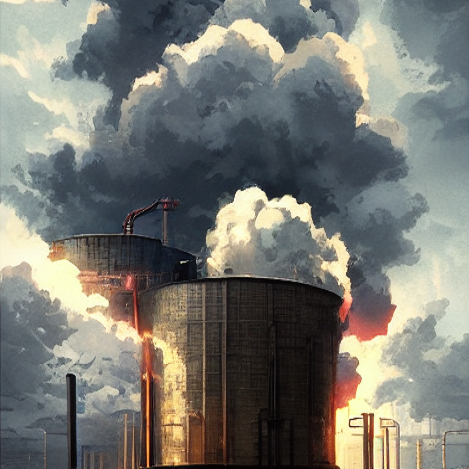
This article is part of a series on the DEC Report. The DEC report is a 200+ pages freely accessible report I wrote on climate change and energy. It assesses the world’s potential to tackle climate change by removing GHG emissions in energy and agriculture, and it assesses how we can optimize this transition.
- ➡️➡️ The DEC Report (pdf)
- 🌊 Hydropower potential (1/8)
- ☀️ Solar potential (2/8)
- 🌬️ Wind potential (3/8)
- 🏭 Nuclear potential (4/8)
- 🛢 How much fossil fuel do we consume each year? (5/8)
- 🔥 Energy, EROI and limits to growth (6/8)
- ☢️ How many people died because of the Chernobyl disaster? (7/8)
- ⚡ Why do we close nuclear reactors? (8/8)
Global potential of nuclear energy
The global potential of nuclear energy mainly refers to how much electricity we can expect nuclear reactors to produce in the future. Nuclear reactors are a low-carbon source of energy (https://www.ipcc.ch/site/assets/uploads/2018/02/ipcc_wg3_ar5_annex-iii.pdf, A.III.2: median of 12 gCO2eq/kWh vs > 400 for gas and > 800 for coal).
Nuclear reactors are currently the second leading source of low carbon electricity in the world, the TOP 1 source of low-CO2 electricity is dams, which themselves produce less electricity than coal and natural gas.
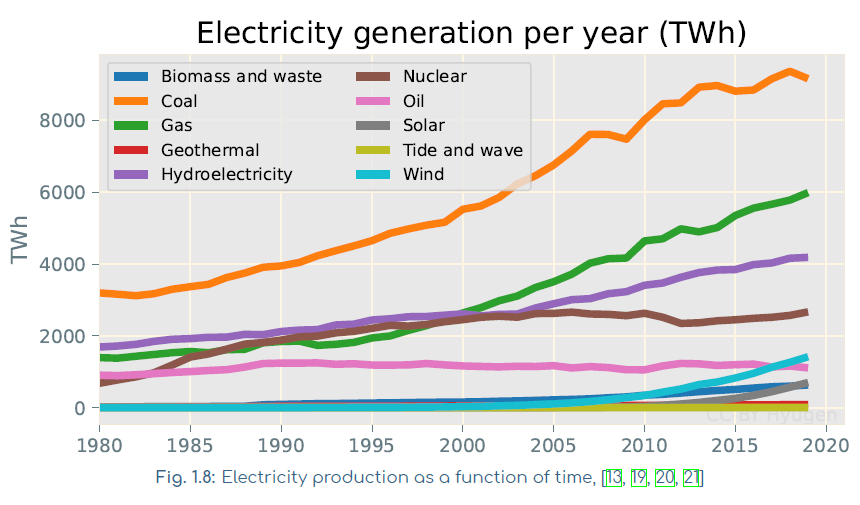
As you can see, nuclear electricity production has decreased post Fukushima (Japan stopped its nuclear reactors), and is otherwise on a slow increase globally. In order to tackle climate change and reduce energy issues, it is extremely interesting to assess the full potential of this energy in the world.
Nuclear reactors have multiple limits:
- They have limits on where they can be installed (environmental risks, social acceptance, geopolitical risks, proliferation risks etc.)
- They have limits on how fast we can install them
- The fuel they use may also have limits
In the DEC report, I assessed some of these limits.
Where can nuclear reactors be installed?
Nuclear reactors mainly require a nearby water source (river / sea / ocean) for cooling the reactor. One exception in the world is the Palo Verde NPP which uses the water from the treated sewage from nearby cities and towns.
IAEA stated multiple other constraints and risks: https://www-pub.iaea.org/MTCD/Publications/PDF/Pub1690Web-41934783.pdf
- Earthquakes
- Tsunamis
- Floods
- Rainfall intensity
- Volcanoes
- Mountains
- High winds
- Sand storms
- Extreme meteorological events
- Geotechnical hazards
- Forest fires
- etc.
I assessed the intensity of these events in the world, compared how intense they were with where nuclear reactors are currently installed, and built a map of environmental constraints for nuclear reactors:
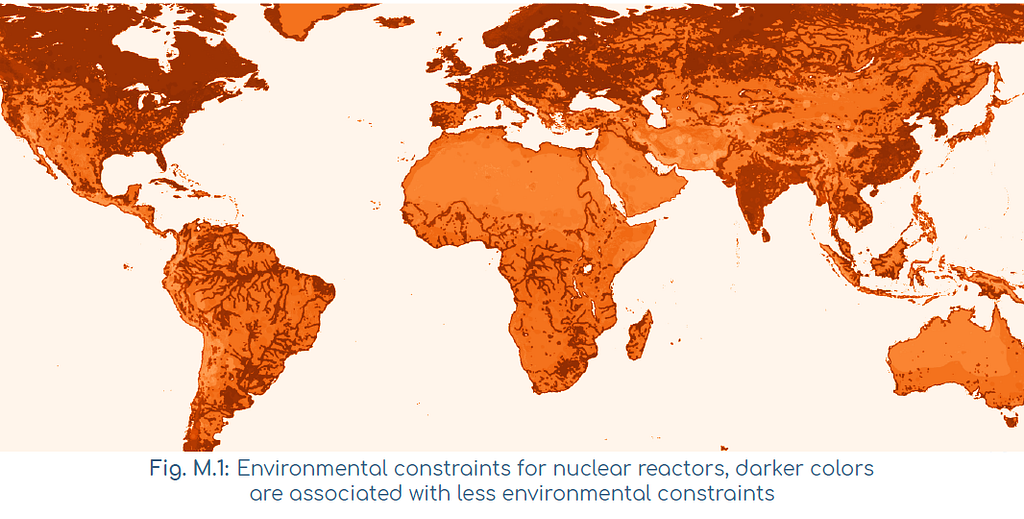
Thanks to this map, I’m able to produce a list of nuclear reactors which currently are under the most constraints:
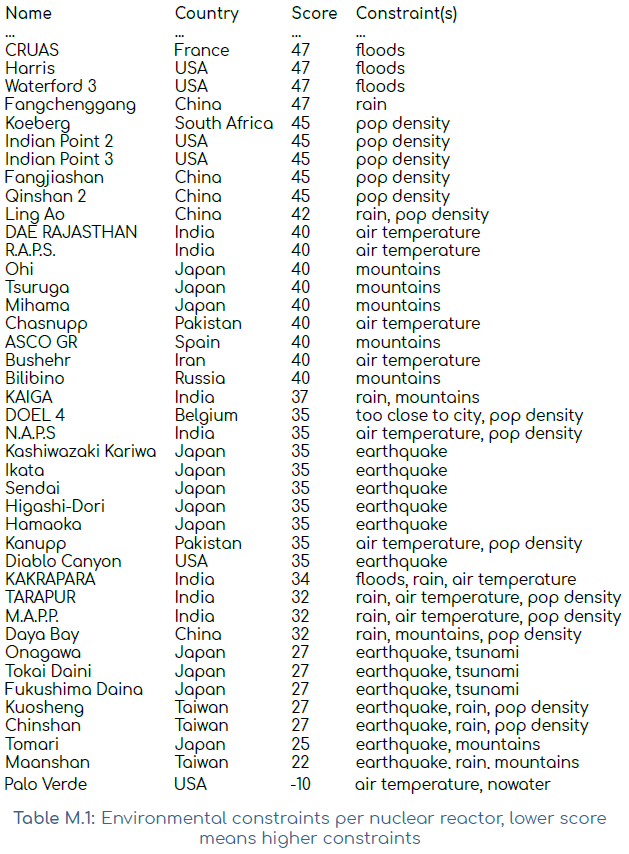
In the DEC report, I also introduced a list of countries which have political, geopolitical or military constraints on nuclear energy. These constraints reduce a lot the ability to forecast new nuclear reactors in these countries, it can be: a voted phase-out of nuclear energy, a declared phase-out by a political leader, recent wars, military coups, war threats, or threats to use nuclear energy for military reasons.
How fast can we install nuclear power plants?
We can assess how much nuclear energy countries installed in the past:
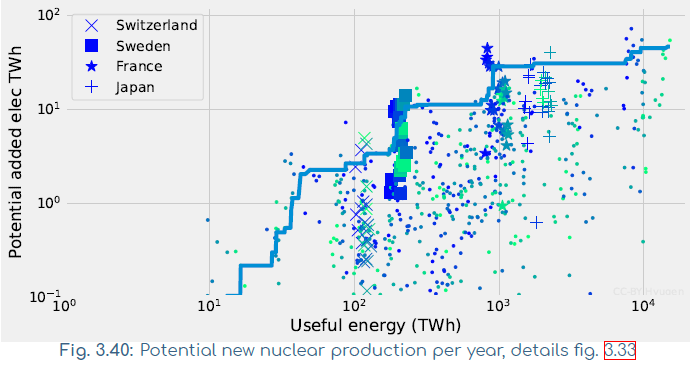
As we can see, some countries were very fast: Sweden, France and Japan all have installed nuclear reactors faster (y-axis ΔTWh/y) than other similar countries (x-axis, useful energy). In the DEC report, countries can’t do more than the blue line of this graph.
We can see how fast nuclear reactors are built on average:
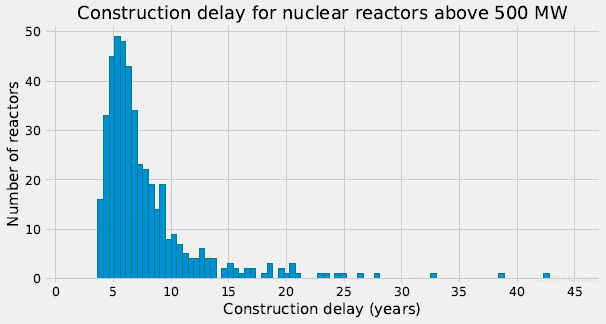
One major problem is that new reactors aren’t the same as the “average” nuclear reactor. While 6~7 years seems to be a great estimate of the median time to build a nuclear reactor in the past, the average NPP takes more than >10 years to be built in multiple countries nowadays. That’s due to higher security standards, and to a lack of experience, as multiple countries stopped their nuclear reactor program either for security concerns, or because natural gas has been cheaper than nuclear energy (ignoring climate concerns).
Will we have enough uranium?
The following graph allows to estimate risks on uranium supply based on current reserves:
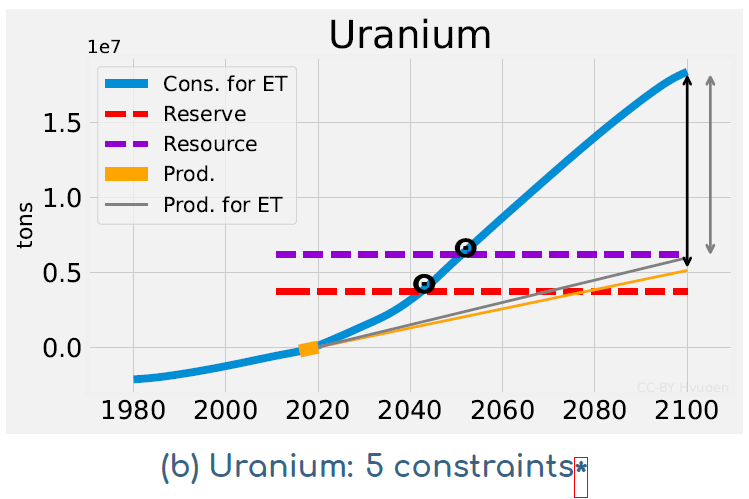
Based on the DEC model, the consumption of uranium could reach almost 20mt between now and 2100. Current reserves of uranium are approximately 4mt (red) with 7mt of resources (violet). However, these limits may change: it is possible in theory to recycle uranium much more. It is possible in theory to build thorium reactors. It is possible in theory to extract uranium from seawater. And, in theory, there could be much more uranium, but there are currently no incentives to search for it as uranium prices are quite low for now. However, most of these problems can only be solved in theory, and there is no evidence that we will be able to solve them on the right scale.
Overall, in this configuration of the DEC model, I don’t expect countries to install much more than ~18 PWh of nuclear energy. As you can see, nuclear energy would slowly go from ~2.6PWh to 20Pwh, which would be an incredible increase. Yet, it’s insufficient alone to replace the > 100 PWh of fossil energy we currently consume (even with cogeneration and only comparing primary energy). But it could be enough to replace a significant portion of fossils we use for electricity (~15 PWh of coal+gas). Yet, doing so would increase risks related to nuclear energy in multiple places of the world. A thorough review of these risks is included in the DEC report.
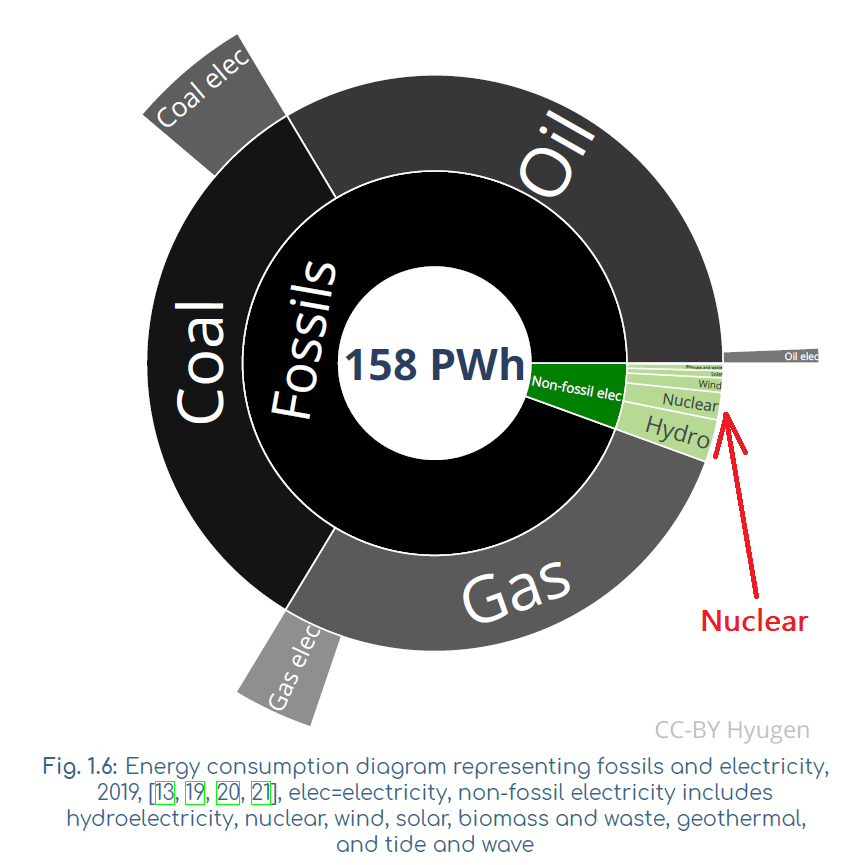
Results
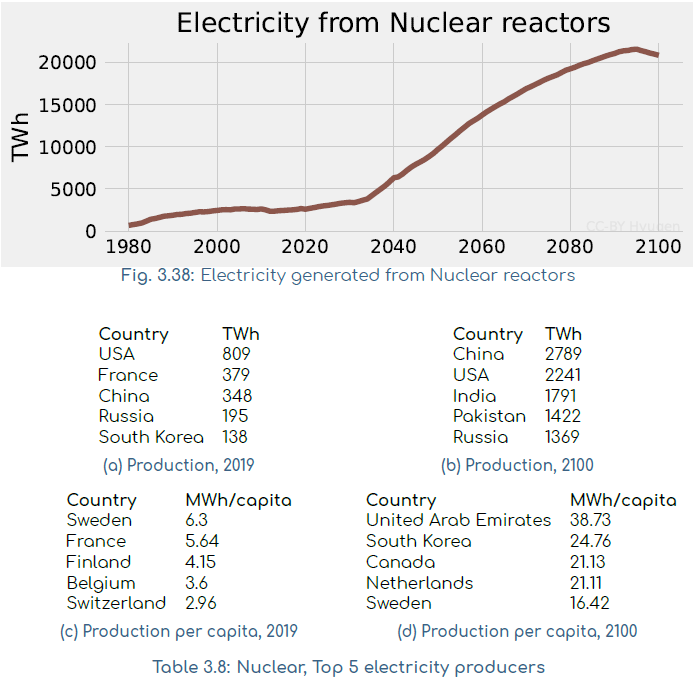
In the configuration used for the DEC report, only countries which already use nuclear energy and which didn’t plan a phase-out can build new nuclear reactors.
It seems plausible that countries like UAE, South Korea, Canada, Netherlands, Sweden or France could produce enough electricity from nuclear reactors to be autonomous, and even to export this electricity in some situations.
Links
You can see how some of these results were used in much more details in the DEC report. Some of the data and models I used are also available on Github.
👏 if you liked this article and I’ll do more!